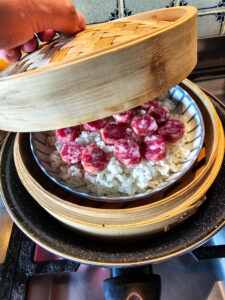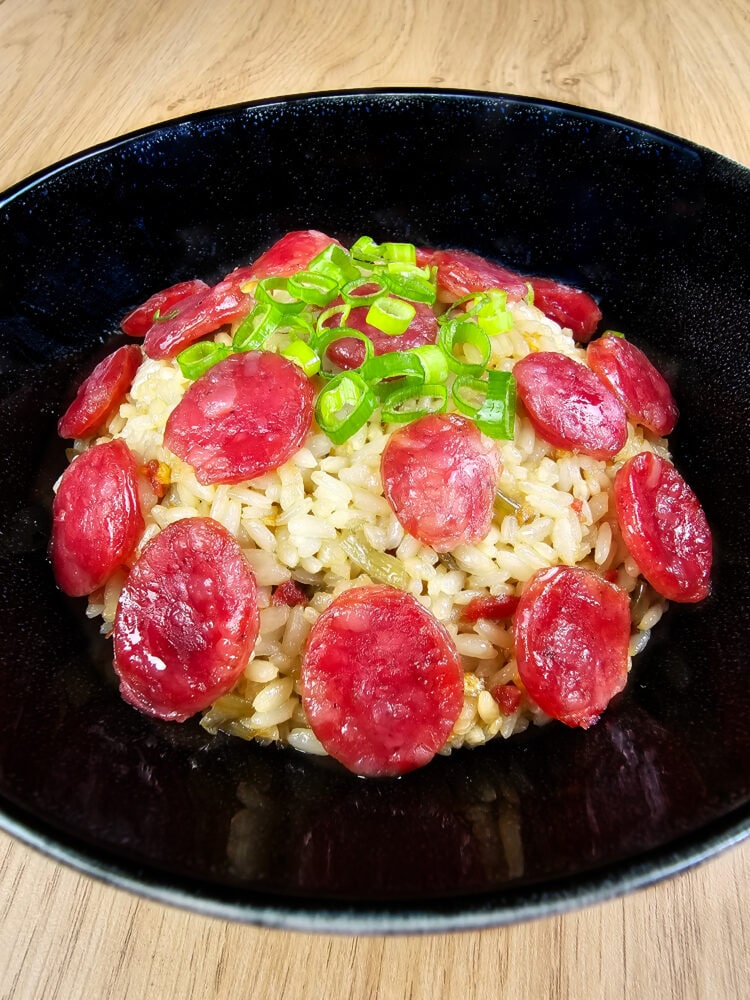A delicious rice dish infused with the unmistakable aroma of Chinese lap xuong sausages
After several weeks of testing, I’m finally happy with the result. I started with a classic Chinese (Cantonese) method and then added a little extra punch.
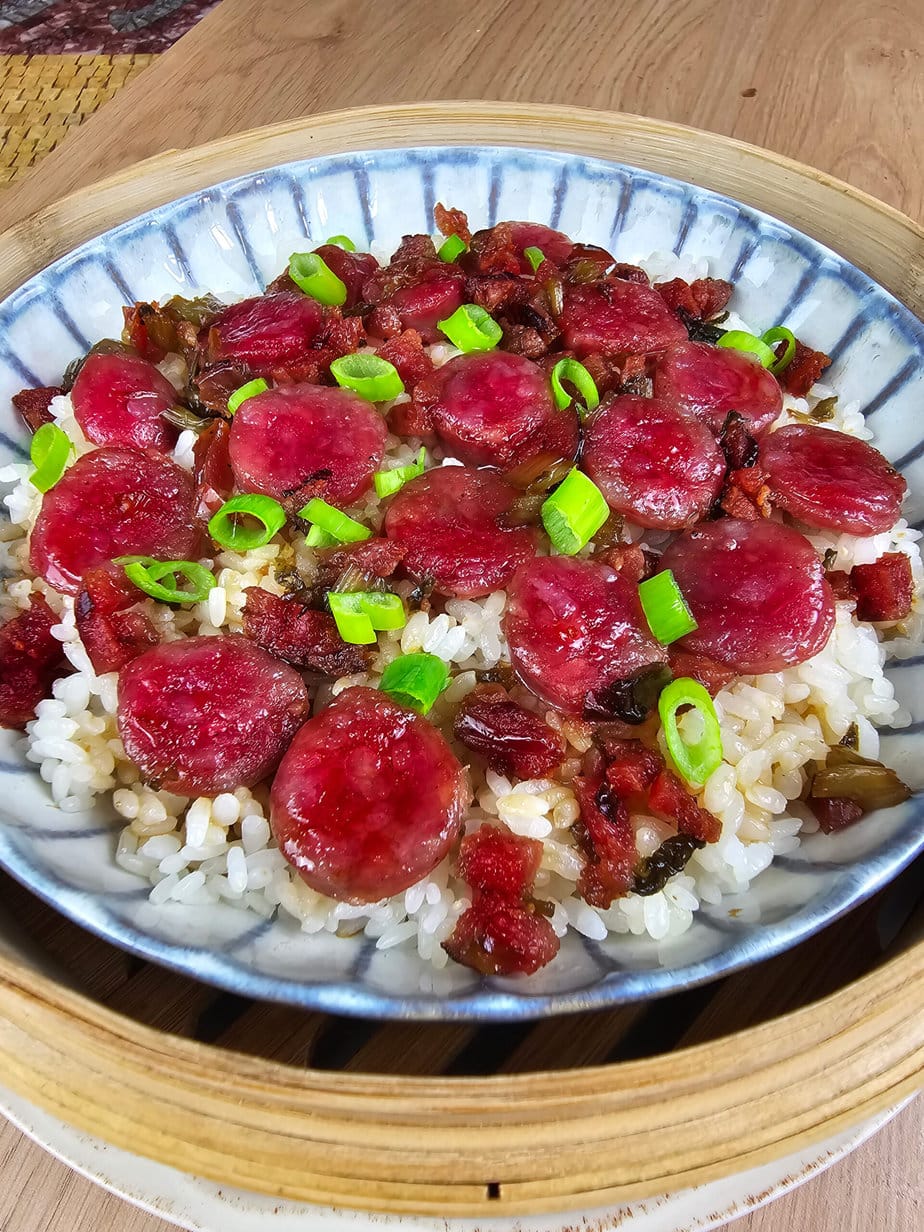
The essence of the recipe: why is it good?
I’m introducing a new section to my recipes because, to be honest, there isn’t always a fun fact or fascinating origin story to share.
Besides, I think it’s easier to follow and tweak a recipe when you understand why each step or ingredient is (or isn’t) necessary.
This new section replaces the traditional ingredient lists and step-by-step breakdowns with a more fluid, easy to read format (or so I hope).
The steps of steamed rice with Chinese sausages
The process breaks down into four main steps:
1. Cooking the rice the traditional way
There’s nothing unusual here. I prefer sushi rice (without the vinegar), though some people go for glutinous rice or jasmine rice. The key, as always, is to rinse the rice thoroughly before cooking to wash away excess starch and keep the grains from turning mushy.
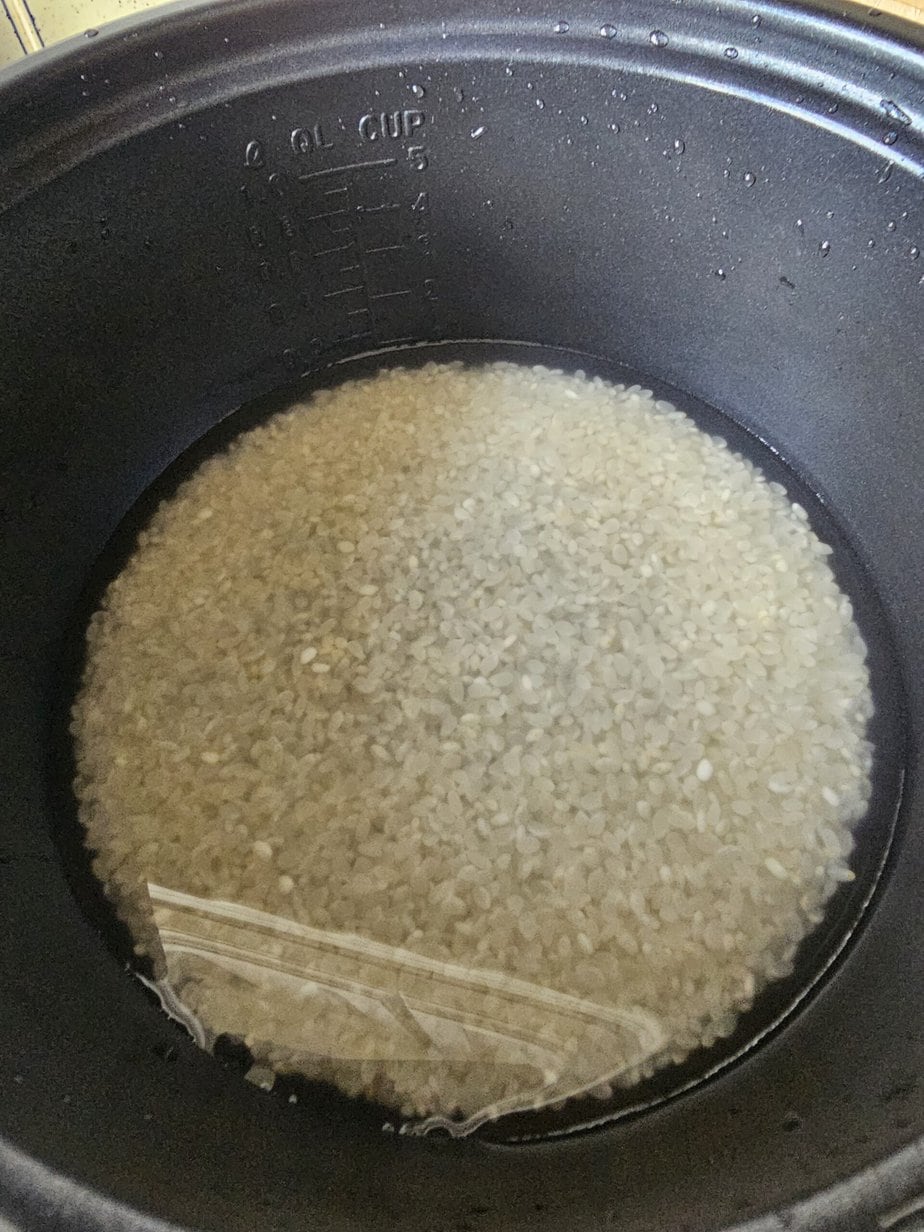
Next, try to cook the rice with about 10 percent less water than usual. Because it will be steamed again later, this helps it keep a good texture. Unlike congee, we want the grains to stay intact.
2. Infusing the fat and making the sauce
As the title suggests, the star ingredient is Cantonese lap xuong sausage. Its aroma is bold and complex, far from the simple salty or smoky profile of most European sausages; you will taste sweetness, five spice, and Shaoxing wine.
We will use a little of the sausage to perfume some fat. A neutral vegetable oil (sunflower or corn) works, but lard, beef tallow, or duck fat deliver a far richer flavor.
Start the infusion over low heat and stop once the sausage pieces are lightly crisp on both sides. At that point, blend the fragrant fat with the sugar, the light soy sauce and the fried garlic.
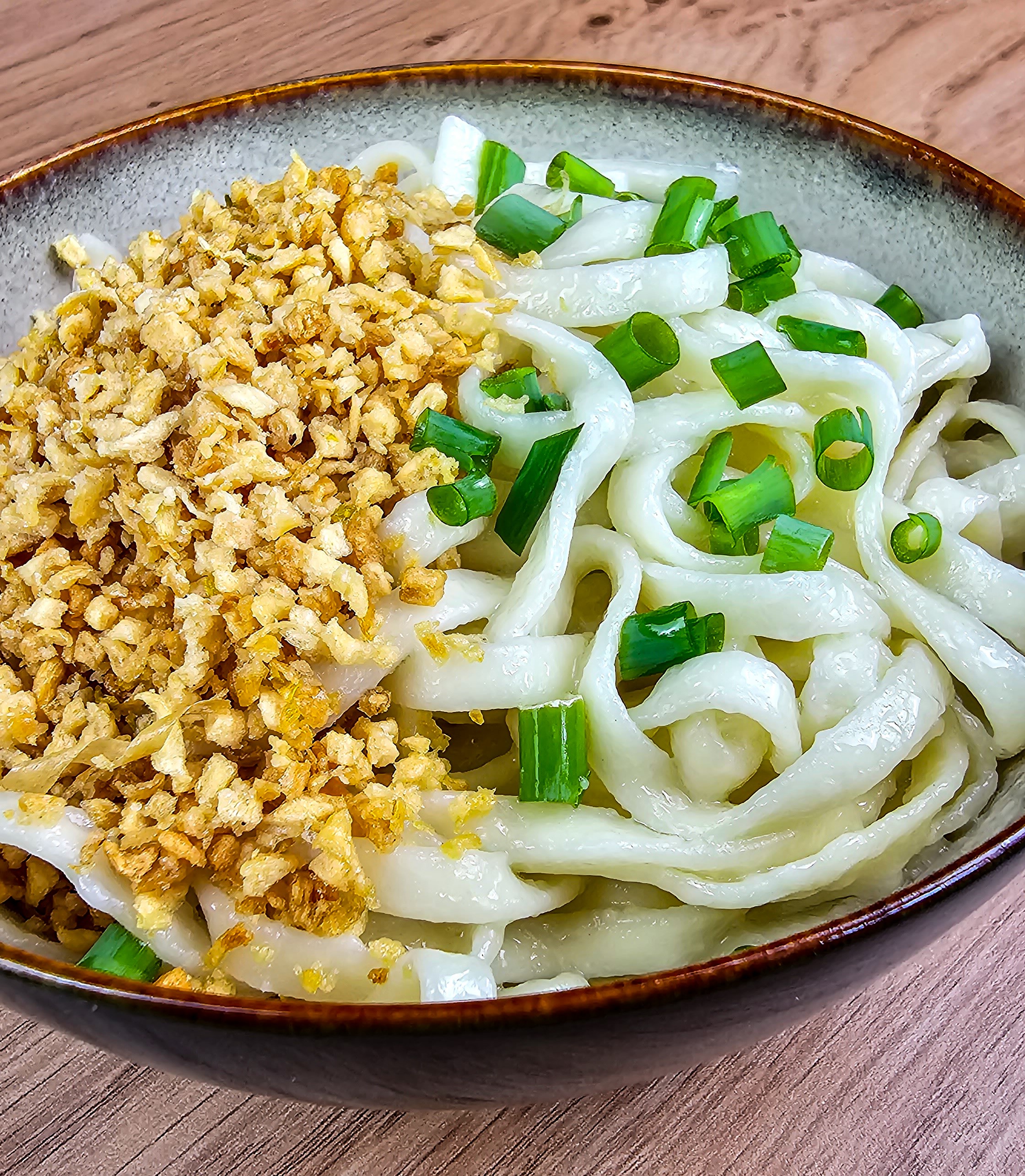
Once the sauce is combined, add the preserved mustard greens and the thinly sliced, crispy sausage. Why not toss them in earlier? I like to give the sugar time to dissolve and the garlic time to infuse the liquid before introducing solids that would thicken the mix and drop the temperature.
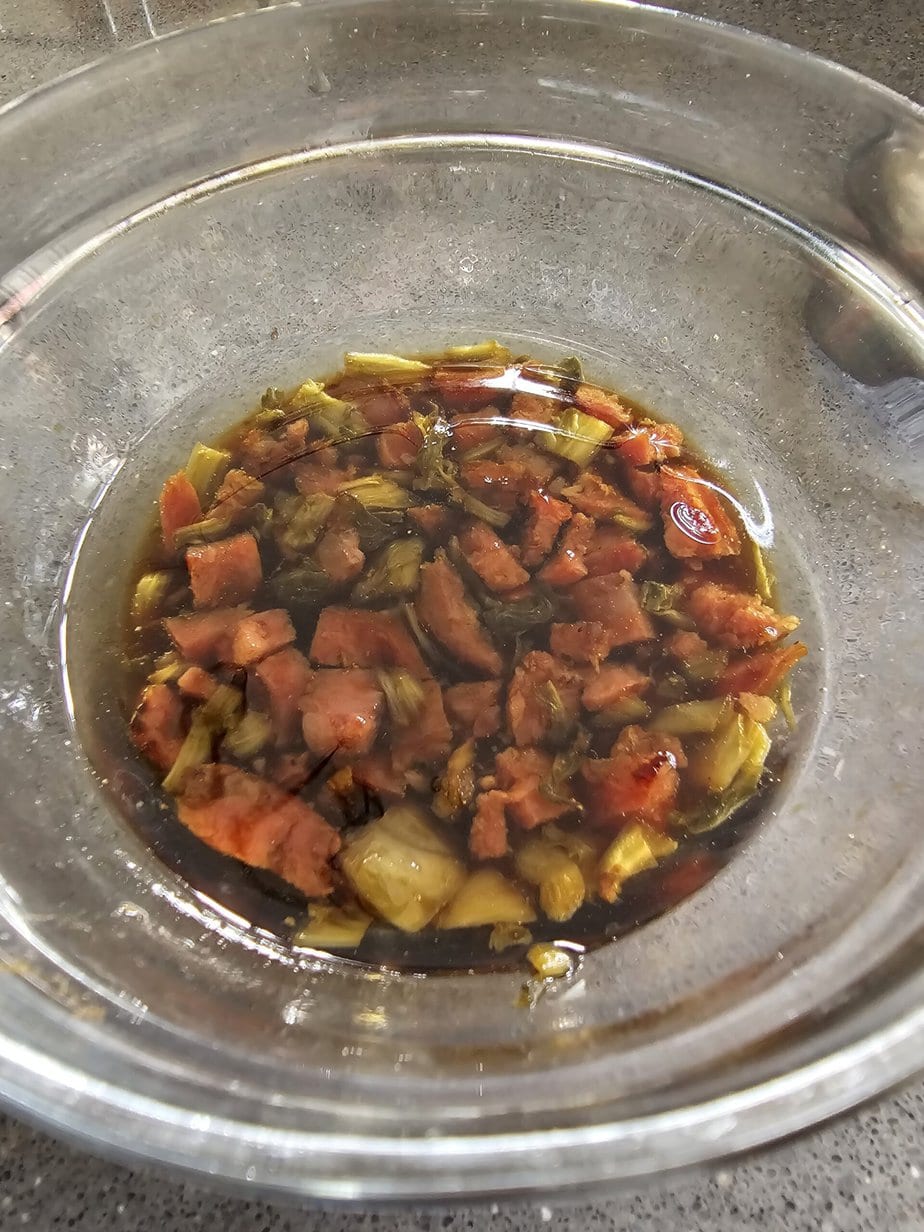
Those extra sausage slices reinforce the classic aroma already built by the fat infusion.
3. Steaming the rice with the sausages
This brief step matters. The gentle heat melts the fat in the lap cheong, letting it seep into and perfume the rice.
4. Mixing in the sauce
When serving, you can pour the sauce straight over the rice in the steamer basket, or, as I did for the photo, mix the sauce separately, lay the cooked sausage on top, and finish with a sprinkle of spring onions.

Steamed Rice with Chinese Sausage – 腊肠蒸饭
Ingredients
- 140 g dry rice
- 2 lap xuong Chinese sausages
- 2 tablespoons lard or neutral vegetable oil, or other animal fat
- 1 teaspoon sugar
- 2 tablespoons light soy sauce
- 1 teaspoon Yacai preserved Chinese mustard leaves
- 1 teaspoon fried garlic
Instructions
- Slice the sausages thinly
- Put the fat in a cold wok or pot and add 4 slices of sausage. Heat over medium until the oil is hot, then turn off the heat. Use thicker pieces here to keep them from burning.
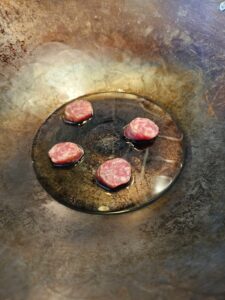
- Pour the hot oil into the soy sauce mixed with sugar and fried garlic, then stir until everything is well combined. This will be the sauce for the rice.

- Finely chop 2 of the cooked slices and fold them into the sauce. Eat the remaining two, after all, the cook deserves a reward.
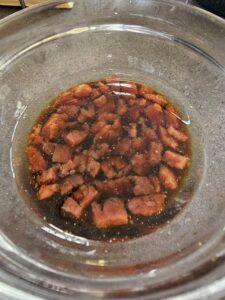
- Add the mustard greens to the sauce. Mix well.
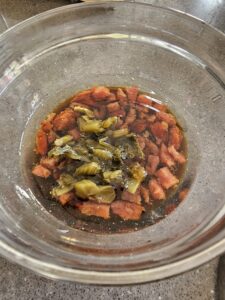
- Cook the rice with about 10% less water than you would normally use.
- Spread the cooked rice on a plate in a steamer, lay the sausage slices on top and steam for 5 minutes or until the sausage turns translucent.

- Pour the rice sauce on top and steam for 3 more minutes.
